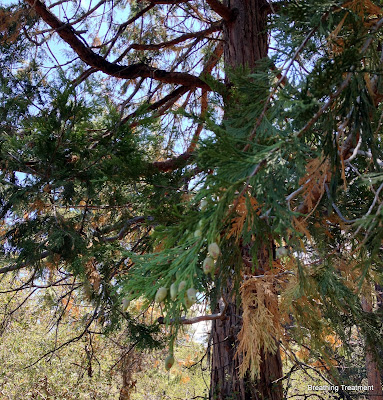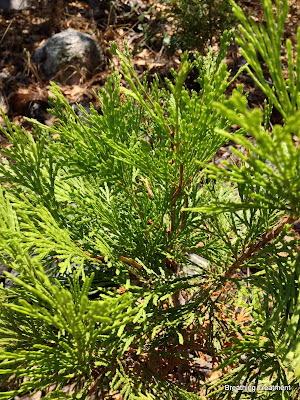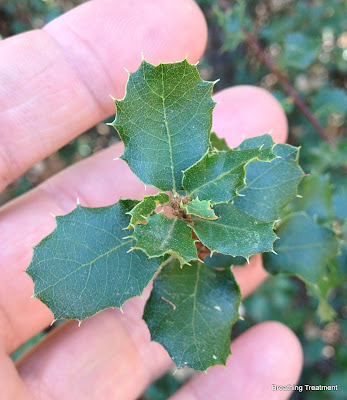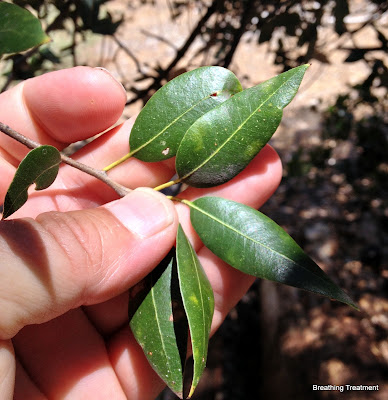I've come to the conclusion that I really need to step up my photography in order to make better species ID. Too many times the ID is dependent on small features such as finding hairs on the undersides of leaves, or something equally obscure.
Hiking along the Santa Ana (or Anna) River Trail, I came across this Incense Cedar (Calocedrus decurrens) and a number of its progeny growing nearby. This is an uncommon tree at Camp Tahquitz, so I spent some time admiring it assuming it to be a singular example. Not so. Just around the corner was a dense stand of them. The smell was delightful!
More after the break
A baby Incense Cedar with its characteristic light green foliage.
The most interesting puzzle along the trail was the great variety of oaks. Oaks are particularly hard to ID because they tend to hybridize readily and because there are so many species. I quickly realized that there were at least three different oaks in the vicinity, judging by leaf shape, color, and growth habit. Then there were the possible hybrids.
The following three photos are of the same oak. Based on growth habit: smallish and bent, I would pick a scrub oak as ID. However, it was growing the shade of another tree and had been pruned for trail access so those factors cast doubt that it was growing in a representative way. Nonetheless, candidate ID's for scrub oak known to grow in the area are Quercus berberidifolia (inland scrub oak, scrub oak) or Quercus dumosa (Nuttall's scrub oak, coastal sage scrub oak, scrub oak). The latter is included in the
CNPS Inventory of Rare and Endangered Plants
on list
1B.1
(rare, threatened, or endangered in CA and elsewhere). It's also known for having the hairier underleaf of the two and I didn't make note of that factor at all. It could have been a runty Q. wislizeni (interior live oak) too, I suppose. Q. berberdifolia hybridizes with many oaks, including Q. dumosa, so I need to be much more of an expert before making a definitive ID.
This multi-trunked growth habit was a common sight along the trail. The oak that I am most familiar with, Coast Live Oak (Q. agrifolia), typically doesn't grow in a multi-trunked habit. My best guess is Quercus wislizeni (Interior live oak, chapparal oak) or Quercus wislizeni var. frutescens (Live oak).
This guy has to be Quercus chrysolepis (Canyon Oak, Maul Oak, Goldcup Oak, Gold cup Live Oak, canyon live oak, gold cup oak) based on the leaf shape. So far as I can tell, it is distinctive to this oak, and in this particular case it seems that there's no hybrid character to the leaves, so I'm pretty comfortable making this ID.
It too grows with a multi-trunked habit.












No comments:
Post a Comment